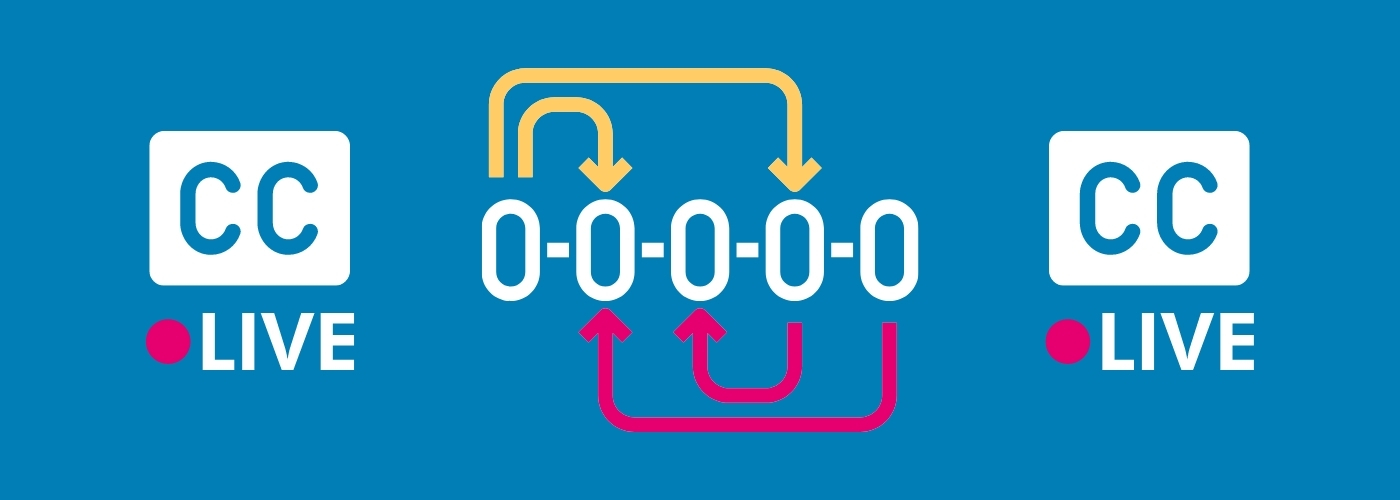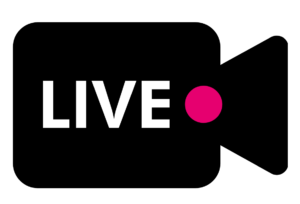How to Scale Live Closed Captioning: 6 Top Tips
Updated: July 21, 2021
As live video content continues to grow in popularity, most video & social media platforms have enabled live streaming features due to the sheer number of people tuning into live streams. In 2019 alone, internet users watched a staggering 1.1 billion hours of live video, and it doesn’t seem to be slowing down any time soon; according to Grand View Research, the live video market is expected to surpass $220 billion by 2028.
While demand continues to rise, many businesses & organizations are looking to implement live video into their content strategies, whether it’s a webinar, live after show, or a virtual conference. Viewers want live content, and in response, brands are ramping up their streaming efforts to provide more high-quality, engaging, and accessible content – one way they do this is by including live captions.
Live captions are for events happening in real-time, as opposed to closed captions (which are used for pre-recorded content). If your organization is looking to scale live captioning for your events, it’s imperative to find a vendor that can support your individual and unique needs. Ultimately, you should be looking for a solution that streamlines the live captioning process while simultaneously saving you time & money.
Toolkit for Live Captioning: Watch the Webinar 🎥
1. Use a Top-Notch ASR Solution 🎯
When scaling live closed captions, one of the most important considerations should be the quality of the vendor’s automatic speech recognition (ASR) technology. Since live closed captions typically rely heavily on ASR engines, you’ll need to make sure to use a solution with high-quality technology.
Some vendors rely on their own proprietary ASR technology, many of which haven’t been considered a contender in the ASR market or widely tested externally. Therefore, it may not be a reliable option – ensure the vendor you’re using has a reputable, state-of-the-art ASR technology.
In addition to the technological foundations of a live captioning solution, you should also factor in error and deletion rates. When following best practices for live caption quality, the accuracy rate should be a minimum of 90% and the deletion rate should be as low as possible. This is critical to the use of ASR for creating captions, as deleting words can ultimately change the meaning and convey incorrect information.
2. Find Dedicated Support 🤝
Streamlining the live captioning workflow can seem challenging at first – it’s possible you may experience a few hiccups when figuring out how to set up live captions, post-event retrieval, or integration set up, but with the right live captioning vendor you don’t need to worry.
Ideally, the vendor you choose for live captions should have a team of dedicated representatives to help you every step of the way, no matter how simple or how complex the issue. When selecting a vendor, keep these questions in mind:
- Do they have a customer support team?
- Do they have account managers for more one-on-one support?
- Is there support documentation you can freely reference at any time?
3. Ensure the Ability to Upgrade After the Live Event 📝
When following best practices for live captioning, you can expect to achieve an accuracy rate of at least 90%. Live captions help make your event more accessible, however, in order to ensure the captions are completely accessible & compliant post-event, vendors should allow easy upgrades to a full captioning process after the live event.
Many vendors don’t have the capabilities to immediately upgrade, or deliver a truly compliant caption file – when looking for vendors, be sure that they can deliver fully accessible files.
At 3Play, we always recommend our customers upgrade to the full transcription process after the event takes place to ensure the captions are 99% accurate at the minimum. Our editors first correct any errors made on the live transcript generated by ASR, and the transcript will then pass through another round of quality assurance.
Watch our Toolkit for Live Captioning ➡️
4. Partner with an Accessibility Vendor ⚖️
When you decide to caption your live events, you open the doors for viewers with disabilities who want equal access to online content. However, total accessibility doesn’t stop there – there are so many other tools to make your video (live or pre-recorded) fully accessible to all.
When you partner with an accessibility vendor, you can easily add other accessible tools to your videos like closed captions, audio description, translations, and more. Working with a trusted vendor that maintains quality and provides unmatched support, you can find all of your needs in one place.
5. Use a Solution that Saves You Money 💰
Cost is always a consideration when looking for a live captioning solution, however, some vendors have different ways in which they charge for live captioning.
Numerous vendors charge according to the number of users – which means the more users you have on one account, the more you’ll pay. For a large company, this can quickly become an expensive solution since many different departments would represent many different users.
We recommend searching for a solution that charges by usage instead, which means that the vendor charges by the minute. With this type of solution, organizations can have as many users as they wish without increasing costs – especially useful for large enterprise companies.
6. Look for Additional User Features 🧰
Last but not least, finding a live closed captioning vendor is about more than just captions. Sometimes, it’s the minor details about the service that can make or break your user experience. We recommend investigating available user features, particularly those that can edify your live captioning experience.
Ask yourself (and your potential vendor) the following questions to learn more about extended user offerings:
- Does the vendor offer integrations with major video streaming platforms? Once live captioning has been set up, integrations are useful for streamlining & automating the workflow by posting captions directly to the live stream as it happens
- Can you caption webinars & meetings on specific video platforms (like Zoom)? Some vendors only allow captions for webinars & meetings if you belong to certain account tier – with this option, you’ll end up paying more in the long run
- Can you schedule live captions in advance? Scheduling captions for a future event gives users the peace of mind, and allows space to focus their efforts on making the live event the best it can be
- Can the vendor handle the length of your live event? Some vendors only allow use of their live captions for a certain amount of time, while a truly valuable vendor will be able to caption your event for an unlimited amount of time
In the world’s current climate, live online video is only going to increase in popularity. As this demand continues to grow, it’s important – for your brand and for your users – to think about live captioning on a large scale, rather than one-off live events.
Watch the Toolkit for Live Captioning 👇
Further Reading

Subscribe to the Blog Digest
Sign up to receive our blog digest and other information on this topic. You can unsubscribe anytime.
By subscribing you agree to our privacy policy.







